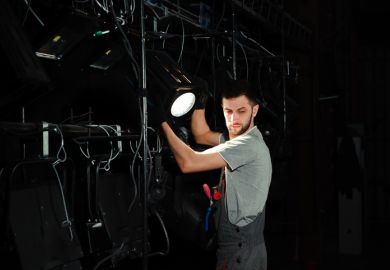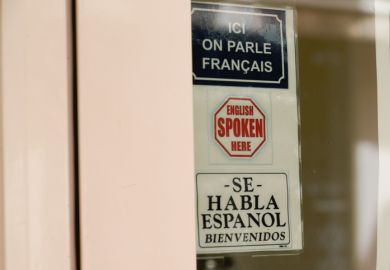Paper trail: Cambridge scholar Solomon Schechter examining documents from the genizah collection purchased in Cairo
The universities of Oxford and Cambridge have joined forces for an unprecedented campaign to purchase an invaluable scholarly resource that illuminates more than a millennium of Mediterranean history.
The material was originally brought to England in 1896 by the “Giblews” - the learned and adventurous Presbyterian twins Agnes Lewis and Margaret Gibson, who had purchased thousands of manuscripts from a dealer in Cairo. When one of them happened to bump into their friend Solomon Schechter, reader in rabbinics at Cambridge, he was asked if he was able to identify any of them. He instantly recognised one as the lost Hebrew original of the Book of Ecclesiasticus, last seen in the 10th century. He urged the sisters to keep quiet about it (to ensure that his Oxford rivals did not get wind of what they had).
To find out more, Schechter set out for Egypt at the end of the same year to look at the source of the manuscripts, a genizah, for himself. A genizah - “storeroom” - amounts to a repository for old books, since Jews are not allowed to destroy any texts that contain the name of God. The one attached to a synagogue on the outskirts of Cairo turned out to have been used as a dumping ground for a millennium.
Schechter later described it as “a battlefield of books”, where “some of the belligerents have perished outright, and are literally ground to dust in the terrible struggle for space, while others, as if overtaken by a general crush, are squeezed into big, unshapely lumps, which even with the aid of chemical appliances can no longer be separated without serious damage to their constituents”.
Since no principles of selection had been applied, these included private letters, bills of lading, shopping lists, IOUs, alchemical formulae and amulets designed to facilitate love affairs.
It was, in other words, a scholar’s treasure trove, but with hidden dangers: Schechter did permanent damage to his health as he rooted around in the dust, mould and mouse droppings. He also quickly decided that he wanted to buy the lot.
The vast hoard became part of Cambridge University Library as the Taylor- Schechter Genizah Collection (also named for Schechter’s friend and patron Charles Taylor, master of St John’s College, Cambridge). More than 1,700 Hebrew and Arabic manuscripts owned by the Giblews went to Westminster College, Cambridge, a training school for what is now the United Reformed Church to which the immensely wealthy twins had donated land.
Other genizah material found its way to Oxford’s Bodleian Library, other leading libraries and private collections.
Everything’s for sale
Last year, however, Westminster College announced that it wanted to sell its holdings and offered Oxford and Cambridge first refusal at a price of £1.2 million. With £500,000 already on offer from the Polonsky Foundation (a charity that supports international developments in higher education), the Bodleian and Cambridge University Library launched a joint fundraising campaign last week to make up the rest.
All this marks something of a departure, with former competitors joining forces to prevent what will now be called the Lewis-Gibson Genizah Collection (in honour of two women who hitherto had been largely written out of history) being sold to a foreign institution or, even worse, split up.
However, speaking at a press conference on 6 February to launch the campaign, Sarah Thomas, Bodley’s librarian, recalled that when she took up the post in 2007, the suggestion that there should be more collaboration with Cambridge over collections was greeted with a hiss.
She took comfort from the fact that it was “a good-natured hiss” and that the library now had experience of joint fundraising and ownership in the case of letters by Franz Kafka that it shares with the German Literary Archive in Marbach.
Cambridge and Oxford have agreed on “a sensible and intellectually coherent division” of the collection, the campaign launch heard.
Among the material the old rivals will be able to conserve, catalogue and digitise are early Bibles, early examples of paper money and a rare eyewitness account of what it was like to fall foul of the invading warriors of the First Crusade.
Meanwhile, relations between the sexes are revealed in the earliest surviving Jewish deed of engagement, setting out where the couple in question would live plus restrictions on the husband’s movements and the wife’s rights to seek divorce.
Even more striking is a page of magical spells, including one designed to help a man seduce a woman. The secret, it seems, is to remove one’s trousers, put them on one’s head and call upon demons to enter the woman’s body for successive nights until she is overcome by love.
Material such as this should continue to prove a gold mine for historians of the Middle East for generations to come.
Register to continue
Why register?
- Registration is free and only takes a moment
- Once registered, you can read 3 articles a month
- Sign up for our newsletter
Subscribe
Or subscribe for unlimited access to:
- Unlimited access to news, views, insights & reviews
- Digital editions
- Digital access to THE’s university and college rankings analysis
Already registered or a current subscriber?




